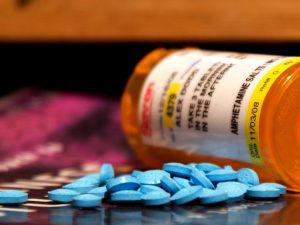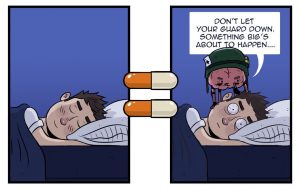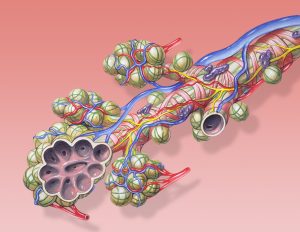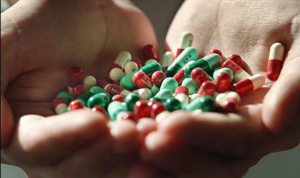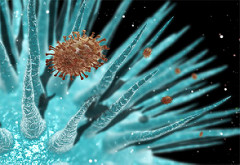Cosmetic companies have been selling anti-wrinkle or anti-aging facial creams for a while. They often advertise that by using their products, users will see an increase in hydration, reduction in facial lines, and look up to ten years younger after one month of usage. Basically, these companies are advertising that they’ve pretty much developed the fountain of youth in a jar.
Before we discuss whether anti-wrinkle creams work, let’s talk about the physiology of our skin!

Skin Layers (Source: Wikimedia Commons)
The skin is the largest external organ on our body and is comprised of three layers: epidermis, dermis, and hypodermis. The epidermis is the outermost layer that is exposed to the environment, and the hypodermis is the innermost layer that is mainly made of fat. The dermis is in the middle and is the layer that contains fibroblasts, which are specialized cells that secretes a chemical compound known as collagen. Collagen is in charge of giving our skin it’s tensile strength and its overall structure.
Wrinkles are caused by external factors like the sun’s UV (ultra-violet) rays, which in turn can also damage fibroblast cells. However, a study found that fibroblast cells also lose their ability to secrete collagen as it ages. Since the wrinkles within the skin are caused by fibroblast cells losing their ability to produce collagen, the question still hangs in the air: do anti-wrinkle creams work?
Yes, and no. Anti-wrinkle facial creams contain ingredients like hyaluronic acid, retinoids, vitamin-C, etc. Hyaluronic acid is a chemical compound that helps your skin retain its moisture. Retinoids are another kind of chemical compound that functions like hyaluronic acid, except it also stimulates the production of collagen and promotes the shedding of old skin cells. Vitamin-C helps with preventing any further damage to the internal components of skin cells. As mentioned before, wrinkles are caused by a decrease in production of collagen by the fibroblast cells in the dermis layer, and these ingredients aren’t a permanent fix to these cells. At best, some of these ingredients can protect our skin from UV damage, or reduce the look of fine lines by adding extra moisture to give the appearance of a fuller look. So anti-wrinkle facial creams can work in a sense that it provides a bit of protection from external factors and a temporary fix. However, it’s not permanent and probably won’t make you look ten years younger.
In all honesty, the best “anti-wrinkle cream” anyone can use is sunscreen. Applying sunscreen to the skin on your body can prevent the development of skin cancer and protect the fibroblast cells within your skin from prematurely stopping the collagen production.
Link to specific study: https://www.sciencedaily.com/releases/2018/11/181108134147.htm

